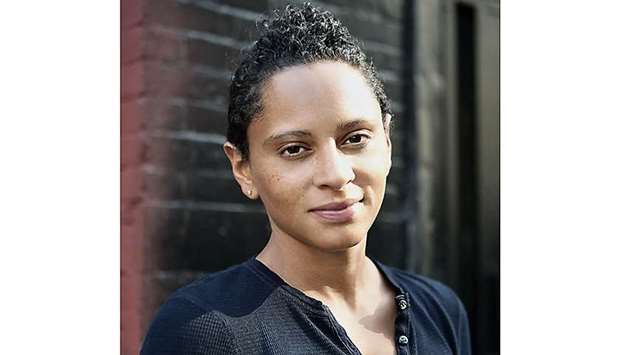Nadia Hallgren’s work as a cinematographer, camera operator and photographer has appeared in more than 70 documentaries, including Trouble the Water, RBG and Fahrenheit 9/11. The South Bronx native has shot in 35 countries, so you’d think there’d be little to rattle her on her first feature documentary as director. After all, she was just following an author on a book tour. A tour that included 17,000-seat arenas. And a Secret Service detail. And being up close and personal with the author, former First Lady Michelle Obama.
“She has this incredible eye contact that never wavers,” says the director of the Emmy-nominated Becoming. “She makes you feel like you’re the only person in the room, you’re so special, and she believes it. And that continues every single day.”
Of being thrown in with the crowds and motorcades, she says, “It was wild. It still sometimes feels like a dream. I think back to … getting over being intimidated by her. She’s Michelle Obama. She has this place in all of our minds as, you know, this extraordinary person. She’s (5-foot-11), she’s beautiful; I’m, like, 5-foot-4. She has this presence in a room that I’ve never experienced. So I just kept thinking, ‘Stay focused.’”
Hallgren was called in after having directed She’s the Ticket, a series of shorts about female candidates in the years following the election of Donald Trump; she met with “Mrs. Obama” for about half an hour and they clicked. As thrilled as she was to document her subject’s transition to a post-White House public existence, she was less excited to see, for instance, a signing at a bookstore on the schedule.
“As a filmmaker, you wouldn’t expect a book signing would be that interesting. One of the young women who works with her came in with a tissue box. I said, ‘Why are you holding this?’ She said, ‘Because when people meet her, they get really emotional.’” Hallgren scoffs. “I’m like, ‘Oh, come on! That’s ridiculous, who does that?’
“So I go in and I start filming and 10 minutes later, I come out in tears, looking for the tissue box,” she says, laughing heartily.
Among admirers, there does seem to be a special fondness for Michelle Obama (currently ranked by the British site YouGov as the second-most-popular political figure in America, to Queen Elizabeth II — four places above her husband, former President Barack Obama.)
“You felt this buzz (in the arenas). You felt like you were in a room with people who wanted to share optimism for the future among one another. I’ve never seen a group of happier strangers in my life.”
Hallgren’s film doesn’t attempt to directly translate Michelle’s autobiography to the screen. It’s more of a companion piece to the book, almost an epilogue that finds its subject returning to public life a couple of years after leaving the White House (where the memoir ends). It contains some stories from the book, often captured as Michelle relates them to those packed arenas. The success of the tour mirrors that of the book, which became the biggest seller of 2018 after just over two weeks of release and has sold more than 10 million copies.
“There was this huge opportunity to be with Mrs Obama in the present moment, to film her in her interactions with her family and people she meets on this journey,” says Hallgren, nominated for her direction and cinematography of Becoming. “I wanted to lean into the verité element of storytelling as much as possible.
“I wanted to consider her internal life while she was in the White House while all these tumultuous things were happening — specifically, the murder of many young Black people by law enforcement or vigilantes, if you will. There’s a specific part of the book where she talks about that and all the emotions that stirred up from her specific position. I knew I had to include that in the film.
“There’s also the story we have in the film where she talks about having these highs and lows. She talks about going to the funeral of the church members who were murdered (when a gunman fired on a South Carolina congregation in June 2015, killing nine), and then they fly home and the same day, gay marriage passes. I remember when I read that, I got emotional. I heard her tell that story on stage and I got emotional again. ‘This has to be in the movie.’ “
There were unguarded moments which Hallgren found revealing, as when Michelle acknowledged (as she does in her book) that the relentless, bad-faith criticism she received did hurt. Or when she discusses how understanding that she is the descendant of slaves has influenced her.
“Her family members came to Chicago through the Great Migration. The photos we use in the film to represent that story are her actual ancestors that were on slave plantations. “There’s this one shot of this family on a porch. Those are her actual ancestors. When you look into the eyes of the individuals, and there’s a little girl in the photo: If these folks could have even dreamed their great-great-great granddaughter would be the first lady of the United States — that gives me chills.”
—Los Angeles Times/TNS

Michelle Obama has this incredible eye contact that never wavers. She makes you feel like you’re the only person in the room, you’re so special, and she believes it. And that continues every single day u2014 Nadia Hallgren
